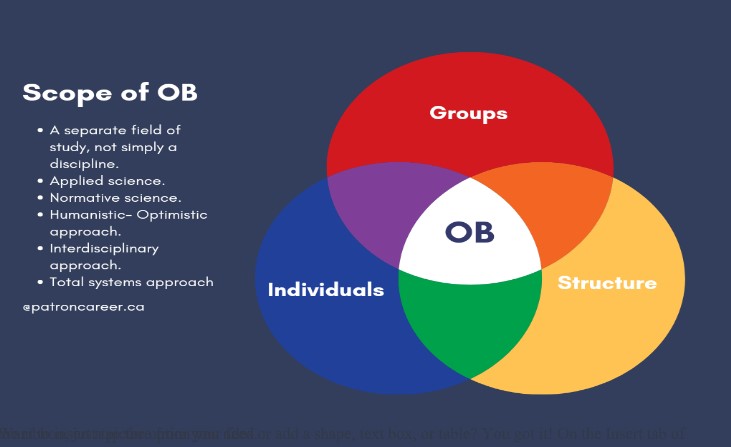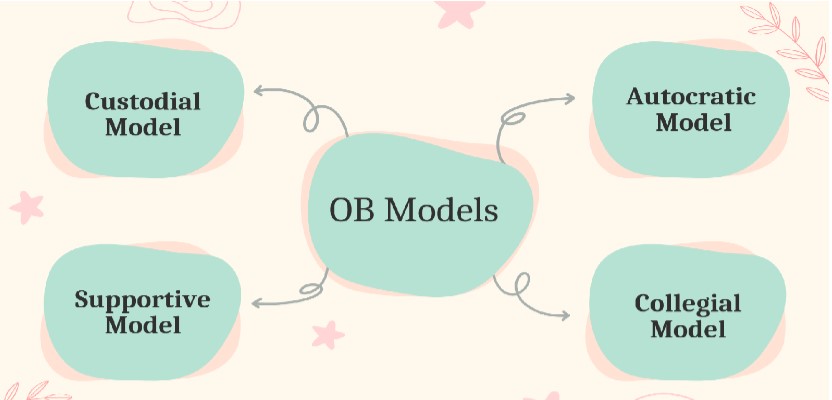
Stand Out in a Job Interview
9 August, 2022
Patron Career Staffing firmly believes in adopting a tailored approach to meet temporary and permanent recruitment needs. We safeguard the interest of our clients by finding such workers who are knowledgeable and reliable.
About UsNeed help? Make a Call
32 Dundas Street East Unit A, L5A1W2

For productivity to fall into place, several key facets must also be prevalent for any organization to reap its goals and objectives. Because the absence of any such aspects can lead to excessive burnout, absenteeism, low productivity, employee dissatisfaction, and many such problems. Organization behavior is your answer to a happy workplace. It helps business entities to respond to the needs of a diverse workforce, build strong flexible organizational structures, develop healthy relationships with unions and diminish workplace conflict.
Organizational behavior studies what people do within an organization and how that behavior affects the performance of an organization. Its principles are applied to improve workplace efficiency and effectiveness.
Stephen P. Robbins attempted to explicate Organizational Behavior as the field of study that explores the impact individuals have on behavior within the organization for purpose of applying such knowledge towards improving organization efficacy. Ob knowledge helps managers to know individual employees better and encourage them to work for a better result. It tackles business problems humanly since it has intact traits to predict human behavior and apply it in a useful manner to further develop organization viability.

-techniques to improve listening skills.
-creating effective teams’ /group tasks.
-better organizational behavior leads to improvement in people skills.
As stated, OB is crucial for an excellent working culture. So there are 4 modes that are based on different ideologies and philosophies concerning effective organizational management. The following models may vary from one organization to another:

AUTOCRATIC: it pertains to the power and authority of apex management. It says that employees need to be controlled completely by their superiors, thereby it's also called the Dictional model. It best describes ancient workplaces wherein people aren’t allowed to ask questions; they just have to follow given directions. Jobs within the autocratic model often lead to minimum performance and in turn, may provide no more than a basic paycheck.
Drawback- it defeats the basic aim of a content workplace because employees are easily frustrated, insecurity surges, there is a heightened dependency on the superiors, and minimum performance rates due to minimum wages. While it may be suitable for some automated factories, it is out of date for modern business concerns.
CUSTODIAL: root level of this model is power with a managerial orientation of authority. This means that employees are furnished with incentives and a sense of economic security such as through welfare schemes, house-lease facilities, child-care centers, transport facilities, and a strong benefits package. Employee requirement that is met by this model is safety and self-esteem needs. The better product resulting from this model is loyalty and attachment of employees to their organization because benefits don’t allow them to change jobs.
Drawback- it depends upon material rewards only to motivate employees and snubs the psychological requirements of the employees.
SUPPORTIVE: a supportive model is built on the concept of leadership with the managerial orientation of support. It acknowledges job performance and participation of the employees within a workplace. The employee requirement which is met is status and recognition. It assumes that employees are self- motivated and are dependent on leadership strive. Manager's job is to assist employees to burgeon their job performance, fostering a climate of growth and accomplishment for the employees.
Drawback- this model has proved to be a success in developed nations but less successful in developing countries where the social and economic needs of the working class are different.
COLLEGIAL: the root level on which this model evolves is- participation with a managerial orientation of teamwork. It is basically an extension of the supportive model. Unlike the first two models, employees are oriented towards responsible behavior and self-discipline. Employee requirements acknowledged is self-actualization, by giving employees a sense of “acceptance” and “respect” in the organization. This framework expects managers to show sympathy and consideration towards their subordinates and attempt to lay out a disciplined and positive working culture.
Drawback- it may prove quite effective in organizations that need to find new approaches- research and development laboratories, technology-software, marketing teams, and similar work situations. If you are one of these organizations, you know which model will suit your business requirements.
While there are hundreds of factors that can influence organizational behavior. The majority of key elements can be boiled down to major 4 groups.
Field of OB
seeks to replace
intuitive
explanations
with systematic
study.
Organization
deals with 4M’s:
Money, Men,
Material,
Machinery….
Out of which
Men are going
to utilize all
other M’s and
make impact in
the
organization.
